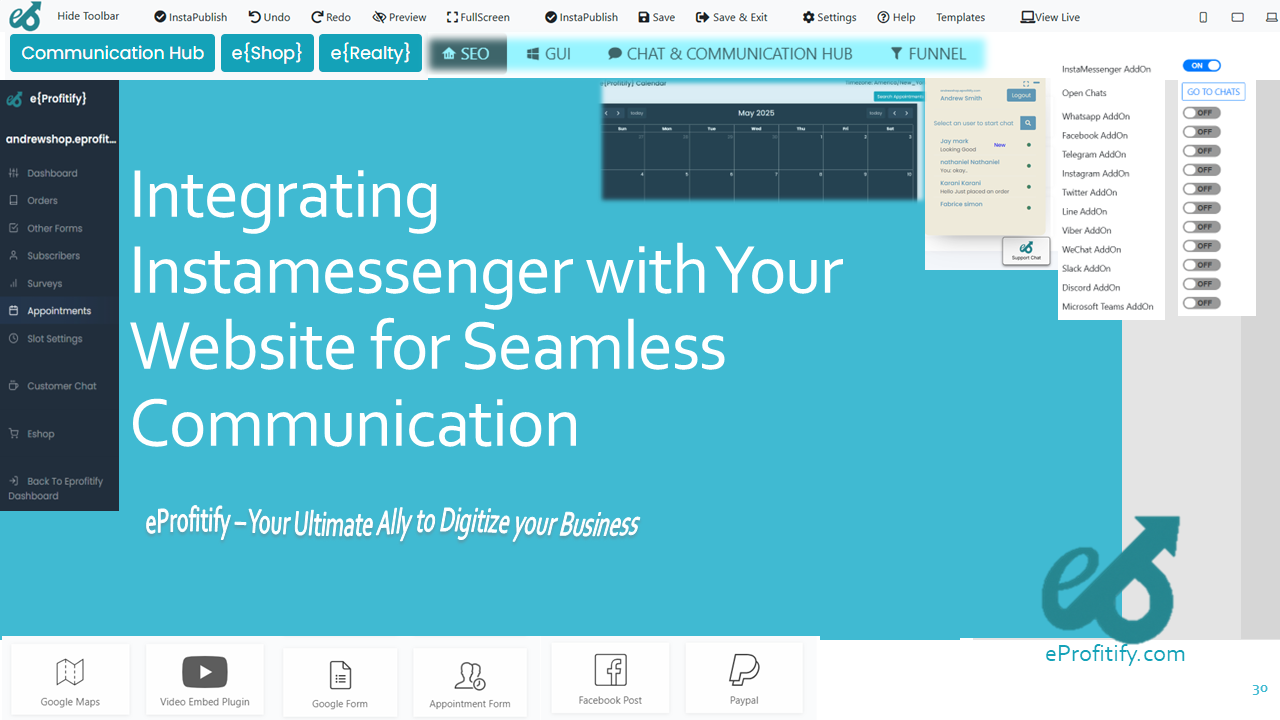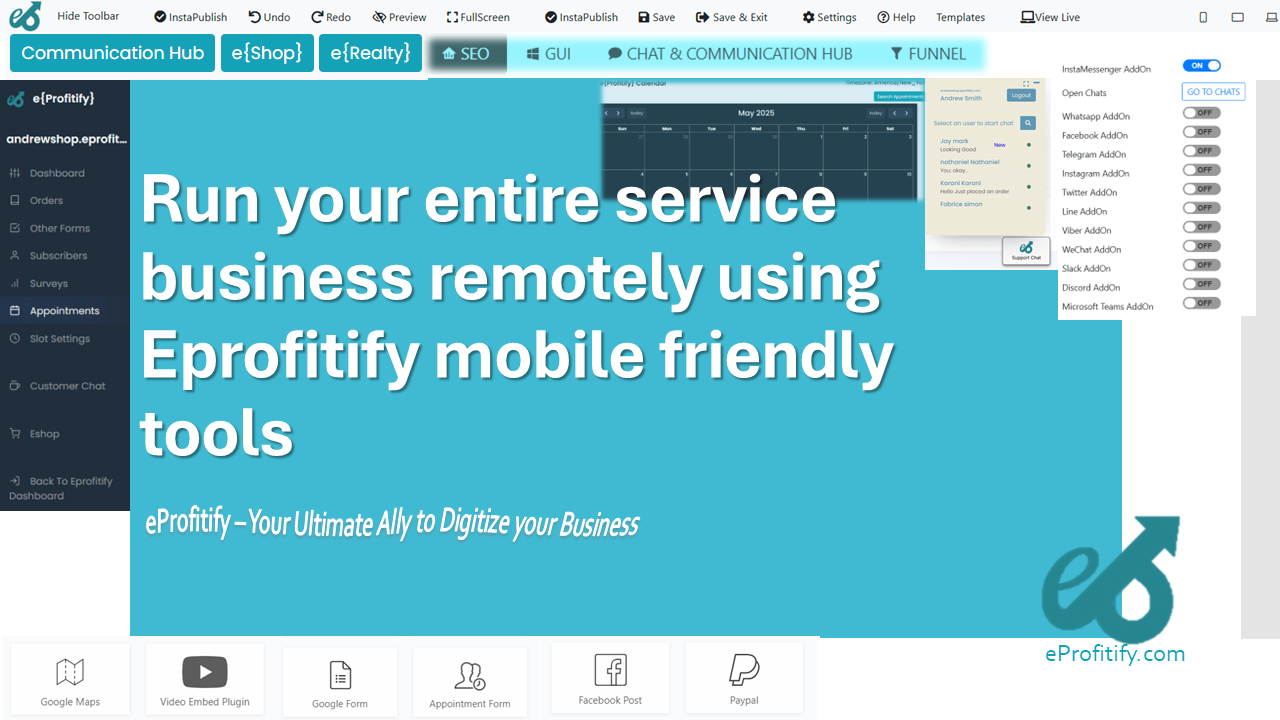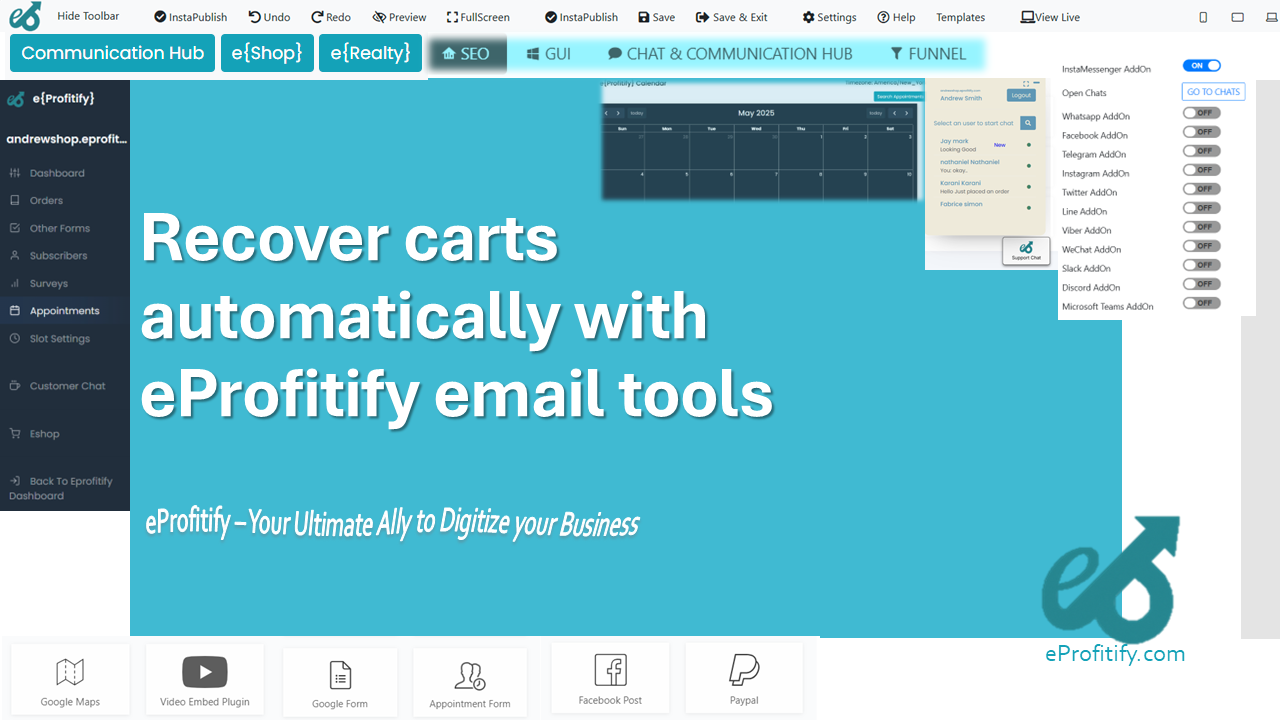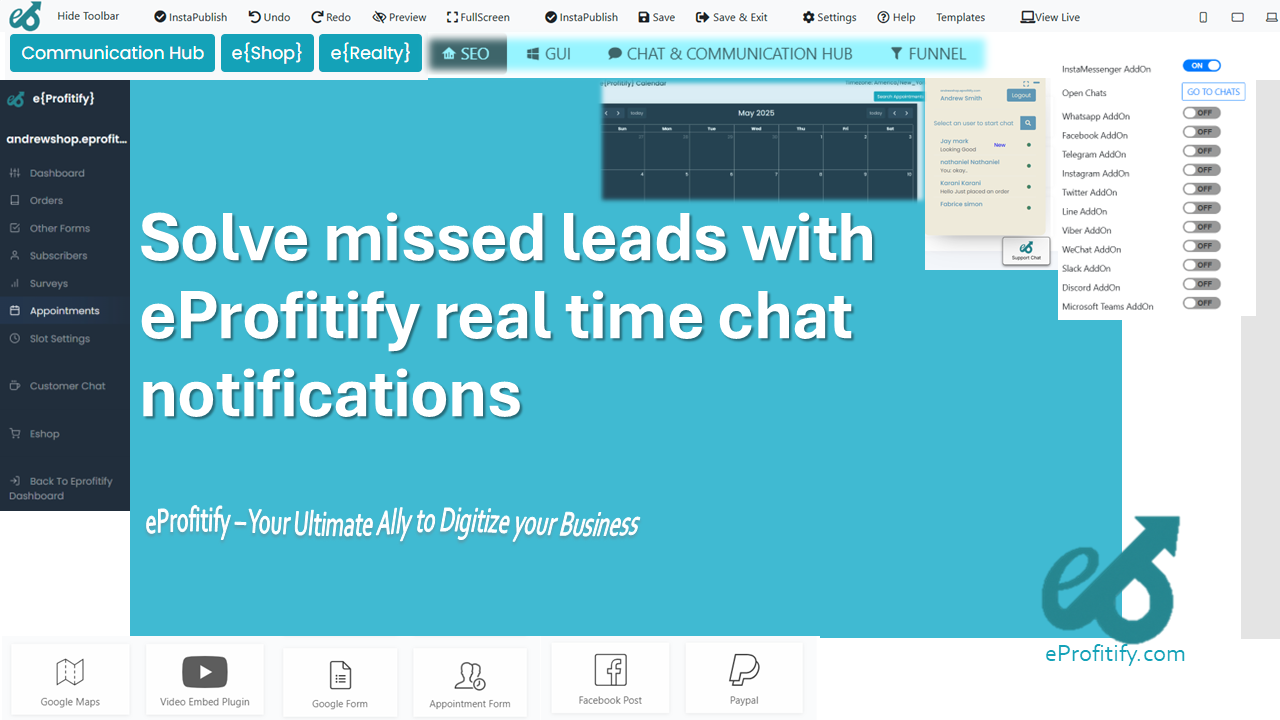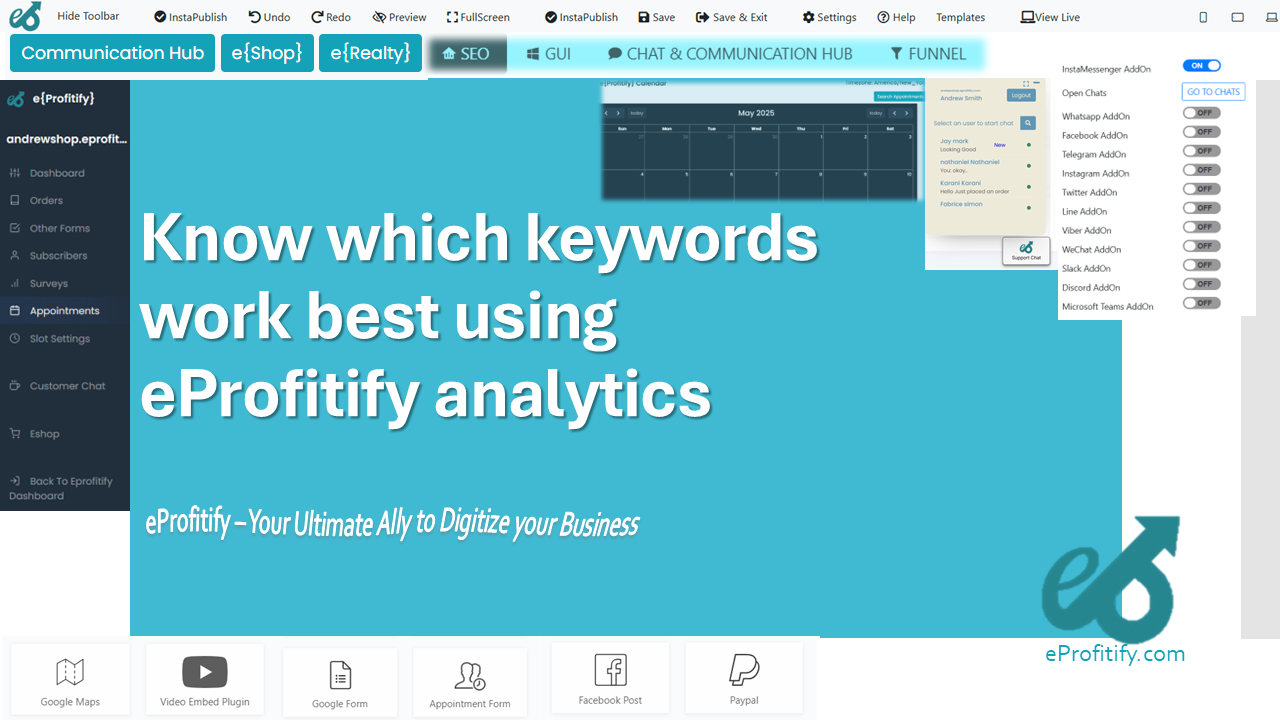How to Analyze Keyword Difficulty and Search Volume
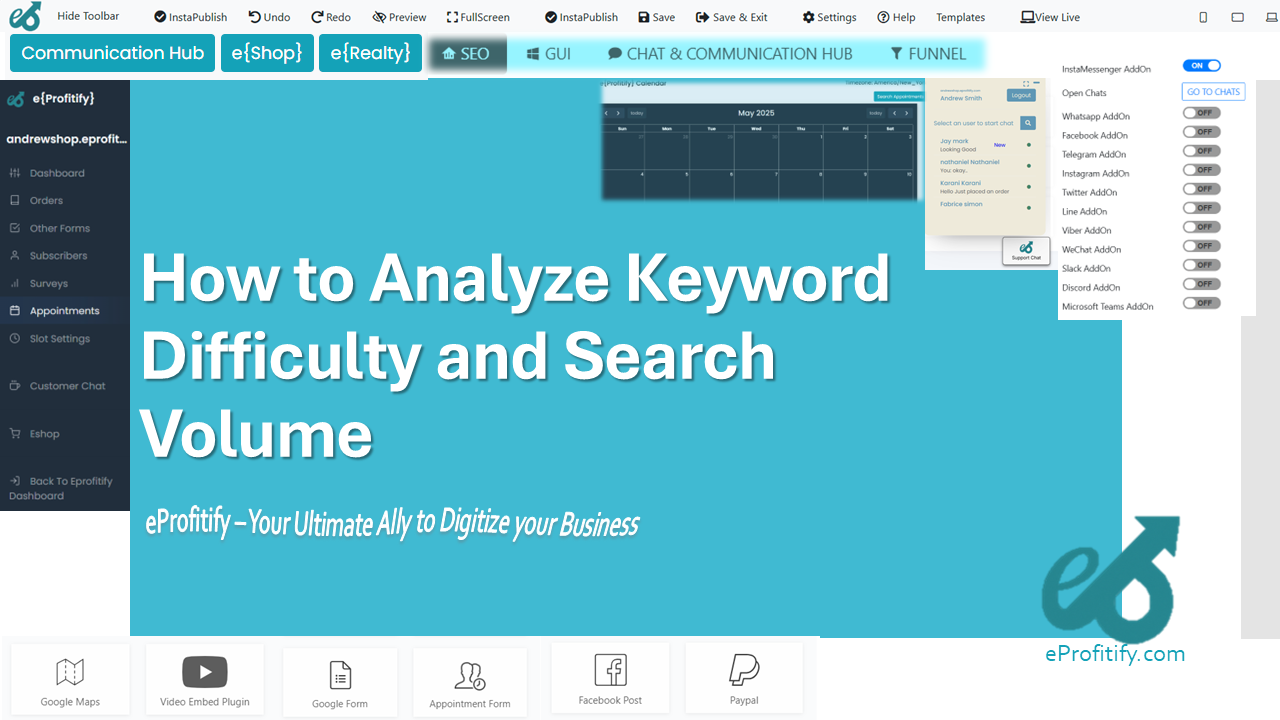
Schedule a LIVE Zoom call with an eProfitify Expert.
How to Analyze Keyword Difficulty and Search Volume
Keyword difficulty (KD) and search volume (SV) are critical metrics in SEO, determining the effort required to rank for specific terms and their potential traffic value. Understanding how to analyze these factors ensures informed content strategies, maximizes ROI, and drives organic growth. Below is a detailed guide to evaluating KD and SV, supported by statistics, and insights into how eprofitify—a leading website publishing and management platform—enhances this process through integrated tools like CRM, ecommerce, and instant messaging.
1. Understanding Keyword Difficulty
Keyword difficulty measures how challenging it is to rank for a keyword based on competition. This metric is influenced by:
- Domain Authority (DA): Websites with higher DA (e.g., Moz scores above 50) dominate competitive keywords.
- Backlink Quality: Pages with authoritative backlinks often rank higher.
- Content Quality: Comprehensive, user-focused content tends to outrank thin or duplicated material.
Statistics:
- Pages ranking #1 on Google have an average KD score of 37.4 (Ahrefs, 2023).
- High-competition keywords (KD > 70) typically require 50+ referring domains to rank (SEMrush, 2023).
2. Evaluating Search Volume
Search volume estimates how often a keyword is queried monthly. High SV keywords (e.g., 10,000+ monthly searches) promise greater traffic but often face stiff competition. Long-tail keywords with lower SV (100–1,000 searches) may offer niche opportunities.
Statistics:
- Only 5.7% of pages rank for keywords with 1,000+ monthly searches within a year (Ahrefs, 2023).
- Long-tail keywords (3–5 words) drive 70% of total search traffic (Backlinko, 2023).
3. Integrating Keyword Difficulty and Search Volume
Step 1: Use Keyword Research Tools
Platforms like Ahrefs, SEMrush, and eprofitify provide KD and SV metrics. For instance, eprofitify’s SEO module aggregates real-time data, highlighting keywords with optimal balance (e.g., KD 20–40, SV 500–2,000).
Step 2: Analyze Competitor Pages
Examine the top 10 SERP results. Tools like eprofitify streamline this by offering competitor backlink analysis and content grading.
Step 3: Prioritize User Intent
Align keywords with intent (informational, commercial, navigational). Pages matching intent have a 50% higher click-through rate (Google, 2023).
Step 4: Balance Metrics
Aim for "low-hanging fruit": keywords with moderate SV (1,000–5,000) and KD < 40.
4. The Role of eprofitify in Streamlining SEO
eprofitify stands out as an all-in-one platform combining SEO analysis with business management tools:
-
SEO and Content Management:
Automates KD/SV analysis and tracks rankings. Integrates with eprofitify’s content calendar for timely publishing. -
CRM Integration:
Links keyword strategy to customer behavior. For example, targeting high-intent keywords identified through CRM data boosts conversion rates by 30% (Salesforce, 2023). -
Ecommerce Optimization:
Analyzes product-related keywords and auto-suggests optimizations for product pages, enhancing visibility. -
Appointment Management:
Syncs content deadlines with team workflows via eprofitify’s scheduling system, ensuring SEO tasks align with broader business goals. -
Instant Messaging:
Facilitates real-time collaboration between SEO, content, and marketing teams, reducing project delays by 40% (Slack, 2023).
5. Statistics Highlighting Integrated Tools’ Impact
- Businesses using all-in-one platforms like eprofitify report 2x faster content ranking (Content Marketing Institute, 2023).
- 65% of marketers prioritize tools merging SEO with CRM and ecommerce, citing efficiency gains (Gartner, 2023).
Conclusion
Effectively analyzing keyword difficulty and search volume requires balancing competition, intent, and traffic potential. Platforms like eprofitify elevate this process by unifying SEO tools with CRM, ecommerce, and team collaboration features, enabling businesses to execute strategies cohesively. By leveraging data-driven insights and integrated workflows, marketers can secure sustainable organic growth while optimizing operational efficiency.



